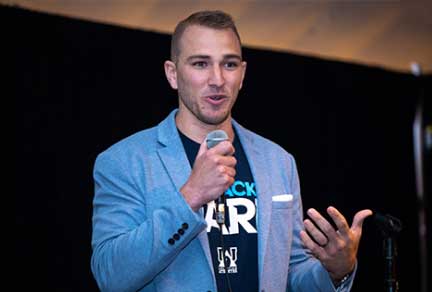Toward more inclusive studies: Reaching and retaining patients from underrepresented communities
Across the clinical research community, we’re working toward creating more inclusive studies. By recruiting and supporting patients from underrepresented communities, we help ensure equitable access to clinical research opportunities. We also make our trials more comprehensive, giving us critical insight into a drug’s impact on a wider range of populations.
As we connect with underrepresented patients, we’re finding that past industry approaches aren’t always effective. If we want to reach a new mix of patients, we’ll need to communicate with and support them in new ways.
To encourage inclusion within our clinical studies, we ask ourselves a few questions as we plan and execute trials.
Is our study team diverse? An inclusive study team helps make our organization more sensitive to and knowledgeable about the needs of diverse communities.
Are we culturally competent? At Alcanza Clinical Research, an organization with a focus on inclusivity, team members participate in ongoing cultural competence training. “It’s important to learn about the customs, beliefs, and values of different communities,” said CEO Carlos Orantes. “When we understand and respect other cultures, we can communicate more effectively — with patients, but also with vendors and coworkers.”
Do we have ongoing organization-wide support? At Parexel, we’ve created several groups to support inclusivity: our Patient Engagement team, which champions patient-centered research practices, and our diversity, equity, and inclusion (DE&I) team, which addresses concerns for both patients and members of our own organization. We’ve also appointed a Chief Patient Officer who advocates for patients in all aspects of research — including equal representation.
Are we developing the protocol with inclusion in mind? Study designs must account for the needs of underrepresented people. So what methods will we use to reach potential patients? What kinds of study environments will make them most comfortable? What technologies will feel familiar and be accessible to them? The protocol is the beginning of the patient experience.
What are the relevant cultural considerations? Cultural norms and nuances can affect how communities respond to clinical research. In some groups, for example, certain illnesses carry stigmas. Another example: To reach communities that include people of Muslim faith, we must consider Ramadan. During the month-long observance, participants can’t take oral medications from dawn to sundown. As much as possible, we want to accommodate patients. We can do that through patient-centric protocol design and through the ways we choose to execute that protocol.
How can we build trust? Minority groups have been harmed in the past by unethical conduct in medicine and clinical research. Understandably, these historical injustices have resulted in mistrust. But building relationships within underrepresented communities can help us work through wariness that might exist. We’ve had success in partnering with trusted local healthcare providers, community organizations, and patient advocacy groups. Through these partnerships, we’ve earned opportunities to explain the value and potential benefits of the studies we’re doing.
We also know patients value transparent communication. In recruitment materials, for example, we can explain the facts of a study in clear, concise language. And we can assure patients that clinical studies are reviewed and approved by independent regulatory authorities that prioritize participant safety.
How can we support enrolled patients? Once patients have joined a study, we need ways to engage and assist them. At the outset, it’s helpful to discuss what participants can generally expect from the process. Then we like to talk with each patient about:
- Communication. Would this patient prefer to communicate by phone or text? Would he or she like to speak with the same person each time? Having a single point of contact, such as the clinical research coordinator, can increase patient comfort and connection to the study. And if that kind of consistency just isn’t possible, it helps to be clear about that from the start.
- Site visits. After reviewing what patients can likely expect during appointments at the research site, we ask if they plan to bring a friend or family member with them. If so, we want to include these support people in the process as much as possible.
- Transportation. Studies — and patients themselves — indicate that transportation difficulties can be a barrier to clinical trial participation, particularly for people in underrepresented communities. Asking patients how they will travel to the study site helps us assess and address potential problems. For instance, if patients need to walk a mile to a bus station or travel long distances by train, they may find it difficult to keep appointments. When we’re able to arrange more convenient transportation, patients are both appreciative and more adherent.
In addition to these questions, there’s one overarching question we like to keep in mind for all trial-related decisions: How could this help or hinder our efforts to include underrepresented people? While the specific questions we’ve discussed above are very useful, we recognize that we could never create a comprehensive inclusive-research checklist. So, we try to run all of our choices through this help-or-hurt filter, applying critical thinking to every aspect of our work. It leads to better outcomes — and, just as importantly, helps us approach all patients with greater empathy and sensitivity.
Listen to the full, Decentrally Speaking | Episode 1: Optimizing Trial Inclusivity For Patients From Under-Represented Communities.
Related Insights
Blog
Do we still need broad patient representation in breast cancer trials? Absolutely.
Oct 17, 2025
Video
Part 2: Risk-based Quality Management Video (RBQM) Series
Nov 11, 2021
Video
A Life in a Day
Jul 28, 2022
Video
Parexel Site Alliances
Jul 13, 2022
Video
Nurse Advisory Panel
Jul 13, 2022
Blog
Parexel names first Patient Ambassador
Jun 17, 2022
Blog
Patient Advocacy Groups: A vital partner for sponsors that understand how to engage with patients
May 3, 2022
Blog
Patients as Partners 2022: Moving from Insights to Action
May 3, 2022
Blog
CNS Summit Recap: The Future is Collaborative
Nov 22, 2021
Blog
Actigraphy advances a patient-first approach: Reduce patient burden — and make the most of valuable data
Oct 15, 2021
Blog
Including patients in DCT design
Sep 13, 2022
Blog
Highlights from ISMPP Asia Pacific Meeting 2021
Sep 20, 2021
Related Insights
Blog
Do we still need broad patient representation in breast cancer trials? Absolutely.
Oct 17, 2025
Video
Part 2: Risk-based Quality Management Video (RBQM) Series
Nov 11, 2021
Video
A Life in a Day
Jul 28, 2022
Video
Parexel Site Alliances
Jul 13, 2022
Video
Nurse Advisory Panel
Jul 13, 2022
Blog
Parexel names first Patient Ambassador
Jun 17, 2022
Blog
Patient Advocacy Groups: A vital partner for sponsors that understand how to engage with patients
May 3, 2022
Blog
Patients as Partners 2022: Moving from Insights to Action
May 3, 2022
Blog
CNS Summit Recap: The Future is Collaborative
Nov 22, 2021
Blog
Actigraphy advances a patient-first approach: Reduce patient burden — and make the most of valuable data
Oct 15, 2021
Blog
Including patients in DCT design
Sep 13, 2022
Blog
Highlights from ISMPP Asia Pacific Meeting 2021
Sep 20, 2021



